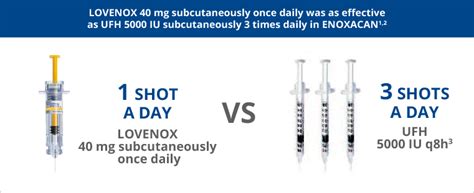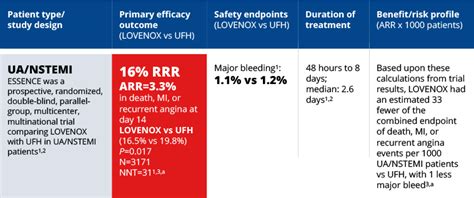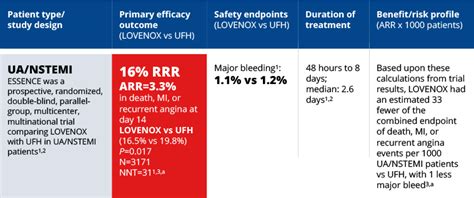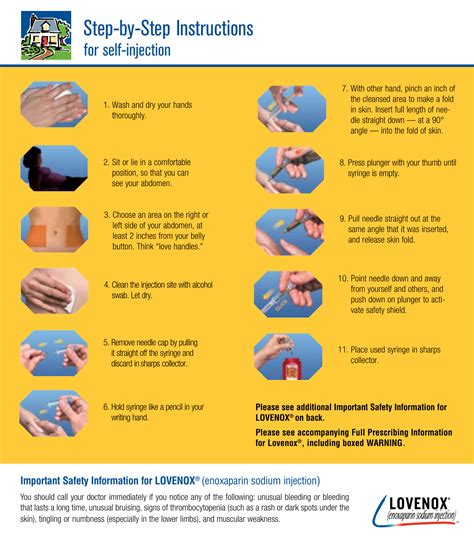Intro
Discover what Lovenox is, a low molecular weight heparin, and learn about its uses, benefits, and side effects in preventing blood clots and deep vein thrombosis, with insights into anticoagulant therapy and medication management.
Lovenox, also known as enoxaparin, is a medication that belongs to the class of anticoagulants, specifically low molecular weight heparins (LMWHs). It is used to prevent and treat blood clots in various medical conditions, such as deep vein thrombosis (DVT), pulmonary embolism (PE), and acute coronary syndrome (ACS). Lovenox works by inhibiting the formation of blood clots and preventing existing clots from growing, thereby reducing the risk of serious complications, including stroke, heart attack, and death.
The importance of understanding Lovenox and its uses cannot be overstated, as blood clots can be a significant threat to public health. According to the Centers for Disease Control and Prevention (CDC), approximately 900,000 people in the United States are affected by DVT and PE each year, resulting in about 300,000 deaths. Lovenox has been shown to be effective in reducing the risk of these conditions, making it a crucial medication for patients at risk of blood clots.
Lovenox is administered via subcutaneous injection, typically once or twice daily, depending on the patient's condition and the doctor's prescription. The medication comes in various strengths, including 30mg, 40mg, and 60mg prefilled syringes, as well as 100mg and 150mg graduated syringes. The dosage and duration of treatment with Lovenox vary depending on the patient's condition, age, weight, and kidney function.
How Lovenox Works

The benefits of using Lovenox include its ability to reduce the risk of blood clots, improve patient outcomes, and decrease the risk of serious complications. Additionally, Lovenox has been shown to be effective in patients with renal impairment, making it a valuable option for patients with kidney disease.
Benefits of Lovenox
The benefits of using Lovenox include: * Reduced risk of blood clots * Improved patient outcomes * Decreased risk of serious complications * Effective in patients with renal impairment * Convenient subcutaneous administrationIndications and Usage

The usage of Lovenox is guided by the patient's condition, age, weight, and kidney function. The medication is typically administered subcutaneously, and the dosage and duration of treatment vary depending on the patient's condition.
Contraindications and Warnings
Lovenox is contraindicated in patients with active bleeding, severe thrombocytopenia, or a history of heparin-induced thrombocytopenia. It is also contraindicated in patients with a known hypersensitivity to enoxaparin or any of its components.Side Effects and Interactions

Lovenox can interact with other medications, including anticoagulants, antiplatelet agents, and nonsteroidal anti-inflammatory drugs (NSAIDs). It is essential to inform your doctor about all medications you are taking before starting Lovenox.
Precautions and Monitoring
Patients taking Lovenox should be monitored regularly for signs of bleeding, thrombocytopenia, and other adverse effects. It is also essential to monitor the patient's renal function, as Lovenox can accumulate in patients with severe renal impairment.Dosage and Administration

For example, the recommended dosage for the prevention of DVT in patients undergoing hip or knee replacement surgery is 30mg twice daily, starting 12-24 hours after surgery. The recommended dosage for the treatment of DVT or PE is 1mg/kg twice daily, with a maximum dose of 100mg twice daily.
Special Populations
Lovenox is used in various special populations, including pediatric patients, pregnant women, and patients with renal impairment. The dosage and administration of Lovenox in these populations may vary depending on the patient's condition and the doctor's prescription.Patient Education and Counseling

Additionally, patients should be counseled on the importance of adhering to their treatment regimen and attending regular follow-up appointments with their doctor.
Conclusion and Future Directions
In conclusion, Lovenox is a valuable medication for the prevention and treatment of blood clots in various medical conditions. Its benefits, including reduced risk of blood clots and improved patient outcomes, make it a crucial option for patients at risk of thromboembolic events.Future directions for Lovenox include ongoing research into its efficacy and safety in various patient populations, as well as the development of new indications and uses for the medication.
What is Lovenox used for?
+Lovenox is used to prevent and treat blood clots in various medical conditions, including deep vein thrombosis (DVT) and pulmonary embolism (PE).
How is Lovenox administered?
+Lovenox is administered via subcutaneous injection, typically once or twice daily, depending on the patient's condition and the doctor's prescription.
What are the common side effects of Lovenox?
+The most common side effects of Lovenox include bruising, pain, redness, or swelling at the injection site, as well as nausea, vomiting, and diarrhea.
Can Lovenox be used in patients with renal impairment?
+Yes, Lovenox can be used in patients with renal impairment, but the dosage and administration may need to be adjusted based on the patient's kidney function.
Is Lovenox safe during pregnancy?
+Lovenox is generally safe during pregnancy, but it should only be used under the guidance of a healthcare provider and with careful monitoring of the patient's condition.
We hope this article has provided you with a comprehensive understanding of Lovenox and its uses. If you have any further questions or concerns, please do not hesitate to comment below or share this article with others who may benefit from this information. Additionally, if you have any personal experiences with Lovenox or other anticoagulant medications, we would love to hear about them. Your feedback and engagement are invaluable in helping us create high-quality content that meets the needs of our readers.
